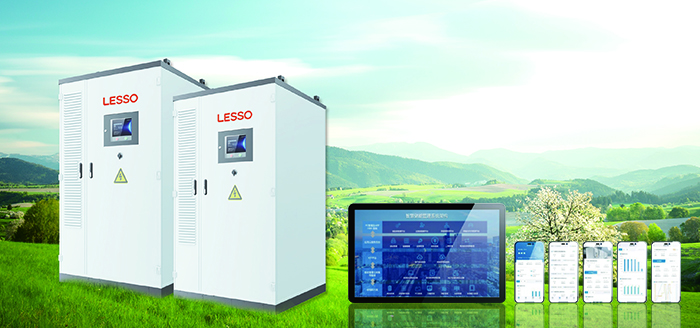As one of the key supporting technologies for future energy transformation, energy storage technology has received extensive attention and research in recent years. With the rapid development of renewable energy and the advancement of grid intelligence, the energy storage market shows great potential for development. This report aims to provide a comprehensive and in-depth analysis of the energy storage industry, including market size, technological development, application scenarios, competitive landscape, etc., so as to provide decision-making references for relevant enterprises and investors.

Market Scale and Trends
(i) Market Scale
According to market research organizations, the global energy storage market size has shown a rapid growth trend in the past few years. It is expected that in the next few years, with the further popularization of renewable energy and the continuous progress of energy storage technology, the market size will continue to maintain high growth.
(ii) Trend analysis
Key trends in the energy storage market include:
1. Growing demand for renewable energy storage: as the proportion of renewable energy in the energy mix continues to increase, the demand for energy storage systems will continue to grow.
2. Continuous advancement in energy storage technology: Continuous innovation and advancement in battery technology, energy storage system integration technology, etc. have improved the performance and cost competitiveness of energy storage systems.
3. The importance of energy management system is becoming more and more prominent: with the development of smart grid, energy management system will become an important part of the energy storage system to improve energy utilization efficiency and system stability.
The development of technology
(i) Battery technology
At present, the mainstream battery technology in the field of energy storage includes lithium-ion batteries, lead-acid batteries, sodium-sulfur batteries and so on. Lithium-ion batteries have the advantages of high energy density, long cycle life, low self-discharge rate, etc., occupying a dominant position in the energy storage market. At the same time, new battery technologies such as liquid flow batteries, potassium ion batteries, etc. are also under continuous development and research.

(ii) Energy storage system integration technology
Energy storage system integration technologies include battery management system (BMS), energy conversion system (PCS), monitoring and control system, etc. The development of these technologies has a direct impact on the energy storage market. The development of these technologies directly affects the performance, reliability and safety of the energy storage system.
(iii) Energy storage application technology
The application scenarios of energy storage technology cover a wide range of fields such as the power generation side, the grid side and the user side. On the power generation side, energy storage technology can be used for smoothing renewable energy output, frequency regulation standby, etc.; on the grid side, it can be used for energy storage peak shifting, reactive power compensation, etc.; on the user side, it can be used for distributed energy storage, intelligent microgrid, etc.
Application Scenarios and Market Analysis
(i) Power generation side energy storage
Power generation side energy storage is mainly used for renewable energy consumption and grid stabilization. With the continuous expansion of renewable energy installed capacity, the demand for energy storage system is also increasing. On the power generation side, energy storage technology can solve the problem of intermittency and instability of renewable energy power generation, and improve the grid's acceptance of renewable energy.
(ii) Grid-side energy storage
Grid-side energy storage is mainly used for peak shifting and valley filling, frequency shifting standby and so on. The energy storage system can store electricity in the low valley of electricity consumption and release electricity in the peak of electricity consumption, thus balancing the load of the power grid and improving the stability and reliability of the power grid. In addition, the energy storage system can also participate in the grid's frequency regulation and standby services to improve the grid's operational efficiency and power supply quality.
(iii) User-side energy storage
User-side energy storage is mainly used for distributed energy storage and smart microgrid construction. On the user side, the energy storage system can be combined with distributed energy sources (such as solar photovoltaic power generation, wind power generation, etc.) to realize energy self-sufficiency and intelligent management. At the same time, the energy storage system can also be used as an important part of the smart microgrid to improve the stability and reliability of the microgrid.
Competitive landscape and enterprise analysis
(I) Competitive landscape
Currently, the energy storage market is highly competitive, with major players including battery manufacturers, energy storage system integrators, and power equipment suppliers. In the field of battery technology, Ningde Times, BYD and other enterprises occupy a dominant position in the market; in the field of energy storage system integration, Sunny Power, Huawei and other enterprises have strong competitiveness.
(II) Enterprise Analysis
In-depth analysis of domestic and foreign energy storage enterprises, including enterprise profile, technical strength, market share and other aspects. Focus on enterprises with technological innovation capability and market competitiveness, as well as traditional energy enterprises and new energy enterprises with layouts in the field of energy storage.
Policies and Regulations
The development of the energy storage industry is significantly affected by policies and regulations. Governments have introduced policy measures to support the development of energy storage, such as subsidy policies and energy storage demonstration projects. At the same time, the standards and norms related to energy storage are also improving, which provides a guarantee for the healthy development of the energy storage industry.
Risks and Challenges
Risks and challenges faced by the energy storage industry include technological risks, market risks, policy risks, etc. In terms of technology, energy storage technology is still under continuous development and improvement, and there is a certain degree of technical uncertainty; in terms of market, the energy storage market is highly competitive, and the market demand and price fluctuations are large; in terms of policy, the support and stability of the policy is crucial to the development of the energy storage industry.

Conclusion and Outlook
As an important development direction of the future energy field, the energy storage industry has a broad market prospect and great development potential. With the continuous progress of technology and cost reduction, energy storage technology will be widely used in renewable energy consumption, grid stabilization, smart microgrid and other fields. At the same time, policy support and market demand will promote the rapid development of the energy storage industry, making it one of the important supporting technologies for energy transformation.







